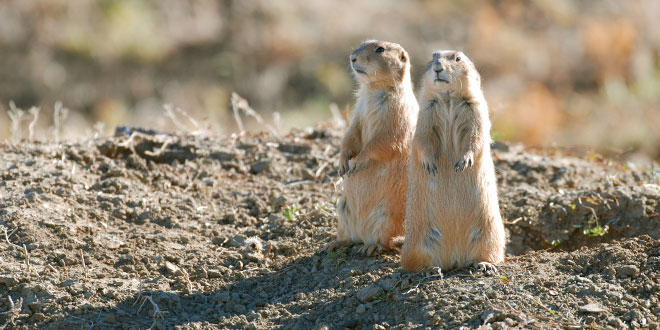Call them what you will: varmints, rodents or pests, but there’s no denying the important role prairie dogs play in the wild.
Research, partly funded by the New Mexico Department of Game and Fish Share with Wildlife program, is being led by Dr. Ana Davidson, a research assistant professor at the University of New Mexico.
Preliminary results suggest what has long been suspected: Prairie dogs are a keystone species. That means the health of the land, especially grasslands, and other species is directly tied to prairie dogs.
In 2010, Gunnison’s prairie dogs were reintroduced onto the Sevilleta National Wildlife Refuge south of Albuquerque, where Davidson is using camera traps to study the impacts.
To date, Davidson and her students have reviewed approximately 500,000 images. She has found higher capture rates of animals such as burrowing owls, jackrabbits, cottontails and badgers at the reintroduction site as opposed to grassland areas that lack prairie dogs.

The small, burrowing mammal also has been directly tied to the health of the highly endangered black-footed ferret, which depends on prairie dogs as a food source. Prairie dog burrows provide shelter for a number of bird species, including the ferruginous hawk and burrowing owl.
Past work by Davidson and other researchers has shown that the foraging practices of prairie dogs helps boost the abundance of flowering plants, which increases the number of pollinators.
Grassland herbivore species such as pronghorns and bison also benefit from the presence of prairie dogs.
“Our preliminary results suggest the reintroduction of prairie dogs at the refuge is helping to restore their functional role in the grassland ecosystem,” Davidson said.
For more information, please visit the department website, wildlife.state.nm.us or email Ginny Seamster at virginia.seamster@state.nm.us.
 New Mexico Wildlife magazine Conserving New Mexico's Wildlife for Future Generations
New Mexico Wildlife magazine Conserving New Mexico's Wildlife for Future Generations
